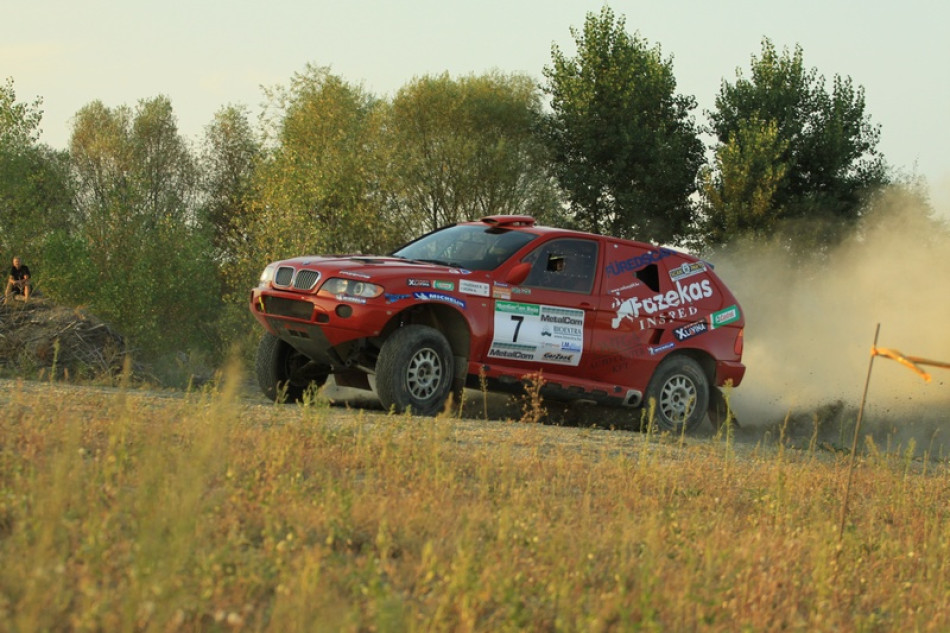Hungarian Baja: A dream that came true

The history of the HunGarian Baja dates back to 2004. At the time of its launch, the Baja was a very ambitious plan – in fact most people thought it a dream that a Hungarian event would be added to the FIA Cross Country rally calendar - but Zoltán Garamvölgyi, the founder and organiser of the HunGarian Baja, took on the challenge. His first step in 2008 was to see the rally included in the FIA Baja Cup, which existed separately at that time, and when the Baja Cup and Cross Country World Cup were merged in 2011the HunGarian Baja became part of the new series. Now, in 2013 the event is celebrating its 10th anniversary.
“Cross-country rally was and is my life, but it was the Italian Baja that made me start thinking about organising an international event,” recalls Garamvölgyi. “I knew we had very good tracks, I knew we had professional and dedicated staff who were able to organise a world class event and so the HunGarian Baja was born.”
Over the years the rally has been through numerous changes and this year will see a new host town, Pápa, and new tracks. “We had a great time in Győr in the past two years but the racers and the teams wanted to go back to the landscapes of North Balaton,” Garamvölgyi explained. “Pápa and also all the surrounding settlements supported the HunGarian Baja, so we decided to set up the new HQ there. Nowadays it is not easy to find and get good tracks but I think this is the year when we can prove to everyone that there is life after the legendary Veszprém tracks.
“The main characteristic of our tracks is their extreme variety, frequent and sudden changes in rhythm. The earth itself is of four to five different types, and there are narrow, technical, twisty parts just as there are more open, fast ones that make the rally both challenging and fun.”


While the HunGarian Bajais challenging, the event is designed with safety in mind. Asked to name the most important part of organising the event, Garamvölgyi replied “Safety” without a moment’s thought. The organisation makes huge efforts to ensure the highest level of safety for competitors, officials and spectators alike.
Over the past decade, Hungary has grown in prominence in the world of international cross-country rallying. Has the HunGarian Baja been the driving force behind this increased profile? “Our field is not too big, but I think I can say that it is strong and becomes more and more known and acknowledged,” Garamvölgyi acknowledges. “I don’t know how big the role of the HunGarian Baja is in this, but for sure it had an effect.”
Recent years have seen many great drivers competing on Hungarian tracks, including Jean-Louis Schlesser, Boris Gadasin, Nasser Al-Attiyah, and Leonid Novitskiy, while drivers such as Maris Saukans and Tonnie van Deijne scored their first international victory at the Baja. Al-Attiyah was crowned a new Baja Cup champion in 2008, while Andreas Schulz became a new World Cup winner in the co-drivers’ classification in 2011.
The HunGarian Baja is also an important part of the national championship, and has been voted Race of the Year on numerous occasions. As the only coefficient-3 event on the national calendar the Baja often plays a deciding role in the series. In 2009, the HunGarian Baja was the last round of the season, and memorably played host to a battle between reigning champion László Palik and Miroslav Zapletal, with the Czech eventually taking the championship crown by half a point.
“As racers, we start each season stating ‘we have to take part in the Baja even if we can’t go to any other rallies that year’,” confesses Attila Csató, co-driver to Imre Fodor, current leader of the Hungarian Championship. “Because there we can compete with icons of cross-country rallies on our home soil; [drivers] normally we only see on TV, in the broadcast of the Dakar Rally. And what is even more important, these state-of-the-art vehicles can also be seen by the spectators – they can visit the service park, have a look at the cars and meet their heroes year after year. As for the quality of the organisation, the fact that the members of the organising committee are invited to work for other international events says all, I think.”
“We have fond memories of the Baja,” reflects two-time Hungarian champion Károly Fazekas. “For example, it was our biggest success to finish second last year. For us it means a bit more pressure to race in front of our home crowd. The Baja is always a very tough race but we are looking forward to it!”

 Facebook
Facebook Twitter
Twitter






